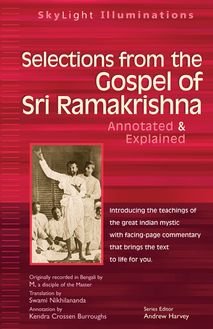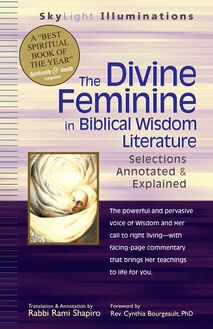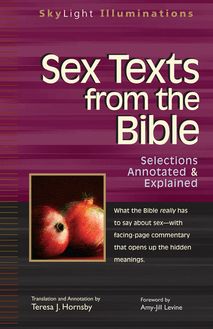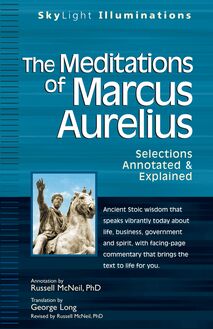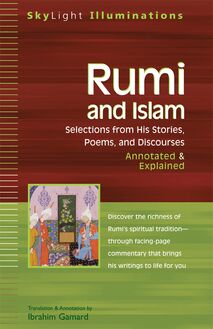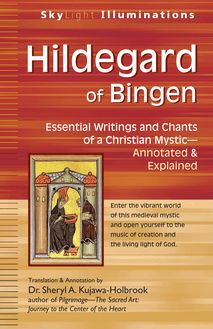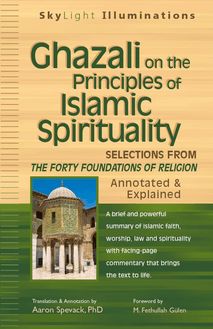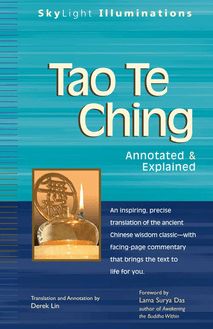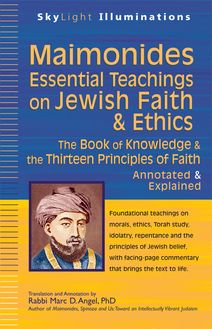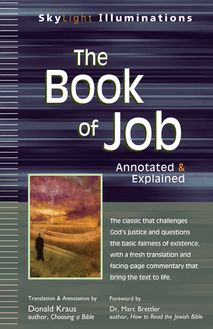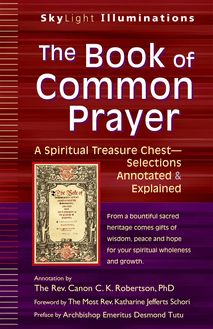Philokalia—The Eastern Christian Spiritual Texts , livre ebook
99
pages
English
Ebooks
2012
Vous pourrez modifier la taille du texte de cet ouvrage
Obtenez un accès à la bibliothèque pour le consulter en ligne En savoir plus
Découvre YouScribe et accède à tout notre catalogue !
Découvre YouScribe et accède à tout notre catalogue !
99
pages
English
Ebooks
2012
Vous pourrez modifier la taille du texte de cet ouvrage
Obtenez un accès à la bibliothèque pour le consulter en ligne En savoir plus
Publié par
Date de parution
19 octobre 2012
Nombre de lectures
0
EAN13
9781594733215
Langue
English
The Eastern Christian “Love of the Beautiful” can
be a companion on your own spiritual journey
A collection of writings by monks from the fourth to fifteenth centuries, the Philokalia more than any other text reflects the Eastern Church’s interpretation of the Bible’s meaning. Simply translated, the title means “love of the beautiful,” which reflects the text’s emphasis on mystical and contemplative practices to engage all of our senses in the acts of worship and prayer.
This introduction to the wisdom of the Philokalia illuminates a text that until now has intimidated the general reader in its scholarly translations from Greek and Russian. Allyne Smith focuses his thoughtful selection on seven themes that recur throughout the five-volume work—repentance, the heart, prayer, the Jesus Prayer, the passions, stillness, and theosis. Smith’s enlightening, accessible facing-page commentary fills in the historical and spiritual context, clarifies core teachings, including the Eastern understanding of salvation, and draws connections to modern-day practices, such as contemplative prayer.
Now you can experience the spiritual wisdom of the Philokalia even if you have no previous knowledge of Eastern Christianity. This SkyLight Illuminations edition takes you on a journey through this beloved text, showing you how the teachings of Eastern monks can help you become by grace what God is by nature.
Publié par
Date de parution
19 octobre 2012
EAN13
9781594733215
Langue
English
Selected Books in the SkyLight Illuminations Series
The Art of War-Spirituality for Conflict: Annotated & Explained
Bhagavad Gita: Annotated & Explained
The Book of Mormon: Selections Annotated & Explained
Celtic Christian Spirituality: Essential Writings-Annotated & Explained
Chuang-tzu: The Tao of Perfect Happiness-Selections Annotated & Explained
Dhammapada: Annotated & Explained
The Divine Feminine in Biblical Wisdom Literature: Selections Annotated & Explained
Ecclesiastes: Annotated & Explained
The End of Days: Essential Selections from Apocalyptic Texts-Annotated & Explained
Ethics of the Sages: Pirke Avot- Annotated & Explained
Ghazali on the Principles of Islamic Spirituality: Selections from Forty Foundations of Religion- Annotated & Explained
Gnostic Writings on the Soul: Annotated & Explained
The Gospel of Philip: Annotated & Explained
The Gospel of Thomas: Annotated & Explained
Hasidic Tales: Annotated & Explained
The Hebrew Prophets: Selections Annotated & Explained
The Hidden Gospel of Matthew: Annotated & Explained
The Infancy Gospels of Jesus: Apocryphal Tales from the Childhoods of Mary and Jesus-Annotated & Explained
The Lost Sayings of Jesus: Teachings from Ancient Christian, Jewish, Gnostic, and Islamic Sources-Annotated & Explained
The Meditations of Marcus Aurelius: Selections Annotated & Explained
Native American Stories of the Sacred: Annotated & Explained
Philokalia: The Eastern Christian Spiritual Texts-Annotated & Explained
The Qur an and Sayings of Prophet Muhammad: Selections Annotated & Explained
Rumi and Islam: Selections from His Stories, Poems, and Discourses-Annotated & Explained
The Sacred Writings of Paul: Selections Annotated & Explained
Saint Augustine of Hippo: Selections from Confessions and Other Essential Writings-Annotated & Explained
St. Ignatius Loyola-The Spiritual Writings: Selections Annotated & Explained
The Secret Book of John: The Gnostic Gospel-Annotated & Explained
Selections from the Gospel of Sri Ramakrishna: Annotated & Explained
Sex Texts from the Bible: Selections Annotated & Explained
Spiritual Writings on Mary: Annotated & Explained
Tanya , the Masterpiece of Hasidic Wisdom: Selections Annotated & Explained
Tao Te Ching: Annotated & Explained
The Way of a Pilgrim: The Jesus Prayer Journey-Annotated & Explained
Zohar: Annotated & Explained
For my parents, who first taught me to love the beautiful
Philokalia: The Eastern Christian Spiritual Texts-Selections Annotated & Explained 2010 Quality Paperback Edition, Third Printing
All rights reserved. No part of this book may be reproduced or transmitted in any form or by any means, electronic or mechanical, including photocopying, recording, or by any information storage and retrieval system, without permission in writing from the publisher.
For information regarding permission to reprint material from this book, please mail or fax your request in writing to SkyLight Paths Publishing, Permissions Department, at the address / fax number listed below, or e-mail your request to permissions@skylightpaths.com.
Grateful acknowledgment is given for permission to use material from the following sources:
THE PHILOKALIA: THE COMPLETE TEXT VOLUMES I-IV compiled by St. Nikodimos of the Holy Mountain and St. Makarios of Corinth, translated by G.E.H. Palmer, Philip Sherrard, and Kallistos Ware. Translation copyright (c) 1979, 1981,
1984, 1995 by the Eling Trust. Reprinted by permission of Faber and Faber, Inc., an affiliate of Farrar, Straus and Giroux, LLC.
Annotation and introductory material 2006 by Allyne Smith
Library of Congress Cataloging-in-Publication Data Smith, Allyne. Philokalia : the Eastern Christian spiritual texts : annotated & explained / annotation by Allyne Smith ; translation by G. E. H. Palmer, Philip Sherrard, and Kallistos Ware. p. cm.-(SkyLight illuminations series) Includes bibliographical references. ISBN-13: 978-1-59473-103-7 (quality pbk.) ISBN-10: 1-59473-103-9 (quality pbk.) 1. Philokalia. 2. Spiritual life-Orthodox Eastern Church-Early works to 1800. 3. Orthodox Eastern Church-Doctrines. I. Title. II. Series: SkyLight illuminations. BX382.S58 2006
248.4'819-dc22
2006017643
10 9 8 7 6 5 4 3
Manufactured in the United States of America
Cover Design: Walter C. Bumford III. Cover Art: Matjaz Slanic, courtesy of www.istockphoto.com.
SkyLight Paths Publishing is creating a place where people of different spiritual traditions come together for challenge and inspiration, a place where we can help each other understand the mystery that lies at the heart of our existence.
SkyLight Paths sees both believers and seekers as a community that increasingly transcends traditional boundaries of religion and denomination-people wanting to learn from each other, walking together, finding the way .
SkyLight Paths, Walking Together, Finding the Way and colophon are trademarks of LongHill Partners, Inc., registered in the U.S. Patent and Trademark Office.
Walking Together, Finding the Way Published by SkyLight Paths Publishing A Division of LongHill Partners, Inc. Sunset Farm Offices, Route 4, P.O. Box 237 Woodstock, VT 05091 Tel: (802) 457-4000 Fax: (802) 457-4004 www.skylightpaths.com
Contents
Introduction
1. Repentance
Annotations
2. The Heart
Annotations
3. Prayer
Annotations
4. The Jesus Prayer
Annotations
5. The Passions
Annotations
6. Stillness
Annotations
7. In the End: Theosis
Annotations
Notes
Suggestions for Further Reading
About SkyLight Paths
Copyright
Introduction
Virtually every spiritual tradition has an authoritative scripture or scriptures that serve as a foundational text for its beliefs, practices, and spirituality. For Christians, that collection of texts is the Holy Bible. But the fracturing of the Christian Church in the fifth century (following the Council of Chalcedon in 451), the eleventh century (the break between what came to be known as the Eastern Orthodox and Roman Catholic Churches), and the sixteenth century (the Protestant Reformation) has produced a dizzying variety of spiritual traditions. Each of these traditions in turn has its own set of subsidiary texts that serve as spiritual classics within the particular tradition. These secondary texts give expression to each tradition s appropriation of the Bible. Each spiritual tradition reflects a lived interpretation of scripture.
For the Eastern Orthodox Churches, the principal spiritual text has come to be the Philokalia, an anthology of older texts edited by Nikodimos of the Holy Mountain (1749-1809) and Makarios of Corinth (1731-1805) and published in 1782. These monks of the Greek Orthodox Church collected sayings on prayer and spirituality from Eastern, mostly monastic writers that span more than a millennium, from the fourth to the fifteenth centuries. The Philokalia, more than any other text, reflects the Eastern Church s interpretation of the Bible s meaning. In the anonymous nineteenth-century Russian classic The Way of a Pilgrim, the pilgrim asks a staretz, or spiritual father, whether the Philokalia is more exalted and holier than the Bible. The staretz answers:
No, it is not more exalted or holier than the Bible, but it contains enlightened explanations of what is mystically contained in the Bible, and it is so lofty that it is not easily comprehended by our shortsighted intellects. Let me give you an illustration. The sun is the greatest, the most resplendent and magnificent source of light, but you cannot contemplate or examine it with the simple naked eye. You would need to use a special viewing lens, which, though a million times smaller and dimmer than the sun, would enable you to study this magnificent source of all light and to endure and delight in its fiery rays. Thus the Holy Scriptures are like a brilliant sun, for which the Philokalia is the lens needed in order to view it. 1
Philokalia is a Greek word meaning love of the beautiful. Two of the Cappadocian Fathers, Gregory the Theologian (329-389) and Basil the Great (c. 330-379), edited a collection of the writings of Origen, the great third-century theologian of Alexandria, and gave it the title Philokalia. In subsequent centuries, other small works of monastic spirituality also took the same title. The full name of the present text is The Philokalia of the Neptic Saints gathered from our Holy Theophoric [ God-bearing ] Fathers, through which, by means of the philosophy of ascetic practice and contemplation, the intellect is purified, illumined, and made perfect -a title that serves not only to distinguish it from the earlier collections but also calls attention to the importance of watchfulness (translating the Greek nepsis ) for the spiritual tradition represented in the work of Nikodimos and Makarios.
The Monks of Mount Athos
Nikodimos and Makarios were both monks of Mount Athos, an autonomous monastic republic located on a peninsula in northeastern Greece. It is generally regarded as the most important center of Orthodox monasticism. Although the first formal monasteries were founded in the tenth century, Athos had already attracted monks such as Peter the Athonite and Euthymios the Younger in the ninth century.
The contemplative tradition of the Holy Mountain (as Mount Athos is known in Greece) had reached its height in the fourteenth century, but by the seventeenth it had become prey to secularizing influences from the West. Realizing the danger to the authentic spiritual character of Mount Athos, the leaders of the Athonite monasteries sought to recover its true heritage. One leader in this was Nikodimos. Although best remembered for the Philokalia, he authored or translated over a hundred books on the spiritual life. Makarios, a fellow monk who later left the Holy Mountain to become archbishop of Corinth, aided him in the compilation of the Philokalia.
The Eastern Christian spiritual tradition is not composed of scho
